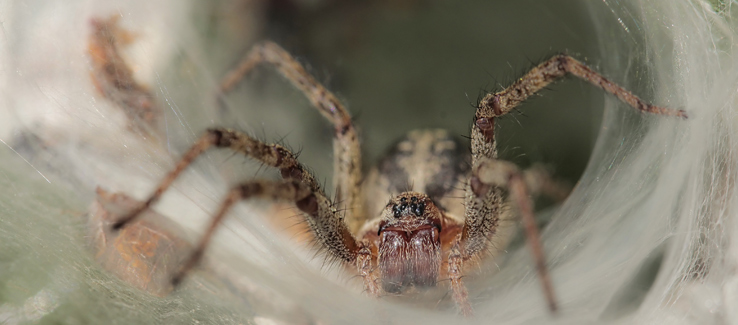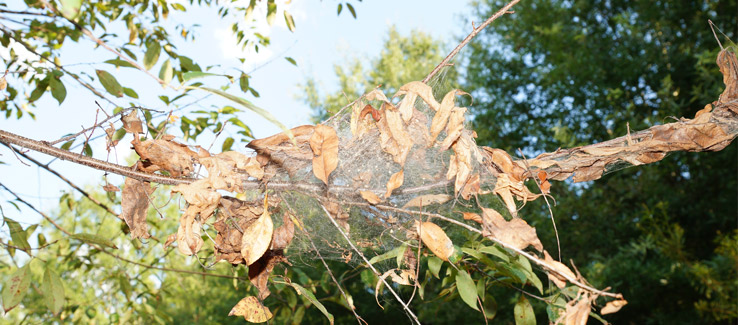Insect Webs Can Lead To Tree Decay, Disease, and Death
Web-generating pest infections are definitely an ugly issue for tree’s appearance and health. Tree webs are often created by mites or caterpillars that create webs on the under part of the tree leaves and close to its branches.
While this issue is not an easy sight to see, it at the same time raises a serious health risk for tree’s health. Pest-generating webs can defoliate and loosen up the core of trees, which eventually leaves the exposed to extra pest infestations, disorders, and even death.
In this article we will outline which insects and pests cause issues that lead to problems and disease. Visit fasttreeremovalatlanta.com/5-tree-shrub-disease-prevention-tips for disease prevention tips, and read below on how to prevent the pest insect webs from happening.
Pests That Create Webs In Trees
Spider mites – Spider mites are spider kinds that create thin and silk-like kind of webs. They creep in the colonies of the trees and produce hundreds of mites per each. They are often not visible to the naked eye and you can typically spot them by the form of the webs they create on the under part of the tree leaves. Apart from spinning webs, spider mites also deprive vital nutrients from the leaves as they consume them, which leads to their falling.
Tent Caterpillar – This caterpillar produces a web inside the crotches of the tree branches. Their eggs hatch as new leaves grow in the spring months and the caterpillars remain active until early summer. They also let their webs to eat tree leaves as a breakfast and in the afternoon before they go back.
Bagworms – These don’t create any webs on trees and plants. However, this kind of worn creates a tiny bag around its body from the plant consumed and when it’s bothered, it returns to the bag for protection. Their eggs hatch before summer sets, but you can only see them once their bags become more than 1 inch in size. These worms may lead to widespread damage to the tree.
Fall webworms – these worms, as their name suggests, lay their eggs on the leaves of trees going through the Autumn falling stage. Thousands of their eggs hatch during the summer season and their leaves spin and enclose themselves in web-kind of hosts named “tents”.
Once the webworm spins and continues eating, the tents grow and lead to ugly establishments. The adult fall webworm caterpillar is around 1 inch long with thin gray-orange hairs over a greenish yellow body. The tree kinds they usually infest are maples, birches, willow barks, walnuts, and mulberrries.
Funnel Web Spiders – These look like a wolf spider in appearance. The make large flat webs they spin through grass, soil covers, or tree and plant branches. The web slants slightly toward a slender funnel where the spider lives. Funnel spiders generally don’t cause any intense damages to the tree but once they bite, this can result into major issues.

Removing Pesky Worms And Their Webs
Insecticides – For widespread infestations or infestations towards the length of trees, insecticides (insect killer substances) used in conjunction with soapy substances are indicated. It’s challenging to get the worms inside their spun web but the insecticide/s will reach them as they aim to grow
Garden Hose – You can use this spray to remove higher webs or reach the web and leave it exposed to predators e.g birds that will feed on the worm.
Soap and Water – Good old soap and water can retard the growth of pesky insects by removing their sticky substance and coating they rely upon and lead to dehydration.
Taking Action Keeps Your Trees Healthy
It is vital to deal with infected areas the moment you see web-kind of structures on your tree. If you don’t treat them in time, the infestation will grow further and the pest will be harder to deal with later.
Keep in mind also that chemical based trees should only be used when necessary as while they do work, they loosen up the tree’s structure and leave it exposed to further infestations. They also repel any useful predators from feasting upon mite and caterpillar populations.
Proper maintenance and care ensures the longevity and health of your trees. Contact www.fasttreeremovalatlanta.com for your tree service and tree care needs.
(404) 220-9965

